Grieving Parents Turning Tragedy of Suicide into Hope Blue Valley schools entering third year of zero suicides with help from grieving parents
Published November 7th, 2023 at 6:00 AM
Above image credit: The Speak UP program features photos of those lost to suicide. (Diana Reese | Flatland)The phone rang at 6:15 a.m. May 19, 2015, in the Overland Park home of Drs. Steve and Karen Arkin.
Their 20-year-old son Jason, a junior at Northwestern University, had been taken to a local hospital. The electrical engineering major had tried to end his life with an overdose and was found having a seizure in the fifth-floor lounge of his dormitory.
The Arkins left for Evanston, Illinois, right away. But Jason died of a heart attack that afternoon before they arrived.
A dean at Northwestern wanted to announce that Jason’s cause of death was due to a seizure.
“We didn’t want to hide the fact that it was suicide,” Karen Arkin said.
Or that Jason had suffered from depression for years and was undergoing treatment. She and Steve shared the 2012 Blue Valley Northwest graduate’s story in his obituary written by his high school girlfriend, on social media and at his memorial service.
Erasing the stigma surrounding mental health and preventing suicide has become the life mission of the Arkins, who are both neurologists.
They started Speak Up (Suicide Prevention Education Awareness for Kids United as Partners) to do just that.
Chad Harrell, 17, was the last kid you’d expect to take his own life, his father, Nathan Harrell, said.
But on June 12, 2017, Chad, a rising senior at Blue Valley North, made that decision.
“We had a choice,” Nathan Harrell said. “We could dig a big hole and climb down in it and never come out, or we could try to keep another family from going through what we have gone through.”
Nathan and Sylvia Harrell named their foundation Keep the Spark Alive in memory of Chad’s nickname, Spark Plug, given to him by his lacrosse teammates for his ability to lift them up.
Regan Johnson, a junior at Paola High School, wanted to become a nurse and was close to taking her exams to become a certified nursing assistant.
She took her life Dec. 7, 2017.
Her mother, BJ Thomas-Wilson, met Sylvia Harrell, Chad’s mother, in a grief support group, and together, they created Give Me 20, a program to help teens avoid a tragic decision. Thomas-Wilson also started a foundation, Shifting Gears for Regan, that raises funds for Give Me 20 and for Sources of Strength in Johnson County schools.
Jan Marrs describes her daughter Lane as “a strong female,” who thought she could handle the aftermath of an assault on her own without telling her parents.
But Lane developed PTSD. Her parents got her help with counseling and medications. The 2016 Blue Valley West graduate went off to college at the University of Arkansas where she decided to stop the meds cold turkey.
She died by suicide Sept. 16, 2016.
Her mother, Jan Marrs, is now a board member on Speak Up. Marrs joined Chad’s mom, Sylvia Harrell, and Jason’s mom, Karen Arkin, and Regan’s mom, BJ Thomas-Wilson, in a support group for parents of kids who died by suicide.
At one time they had 58 members in the Kansas City area.
Leading Cause of Death
Suicide is the second leading cause of death for high school students in Kansas, which ranked 10th in the nation for its youth suicide rate in 2016-2020, according to the Kansas Health Institute.
It’s not clear just how many students – and even teachers and support staff members – have taken their lives in the Blue Valley Unified 229 School District each year. Some say the numbers climbed as high as six to eight. The district admits at least one suicide a year occurred from 2016 to 2021, with five from 2017 to 2018.
The number dropped to zero in the 2021-22 school year. And now the district is entering its third straight year with no suicides reported among the more than 22,000 students and 3,000 teachers and staff.
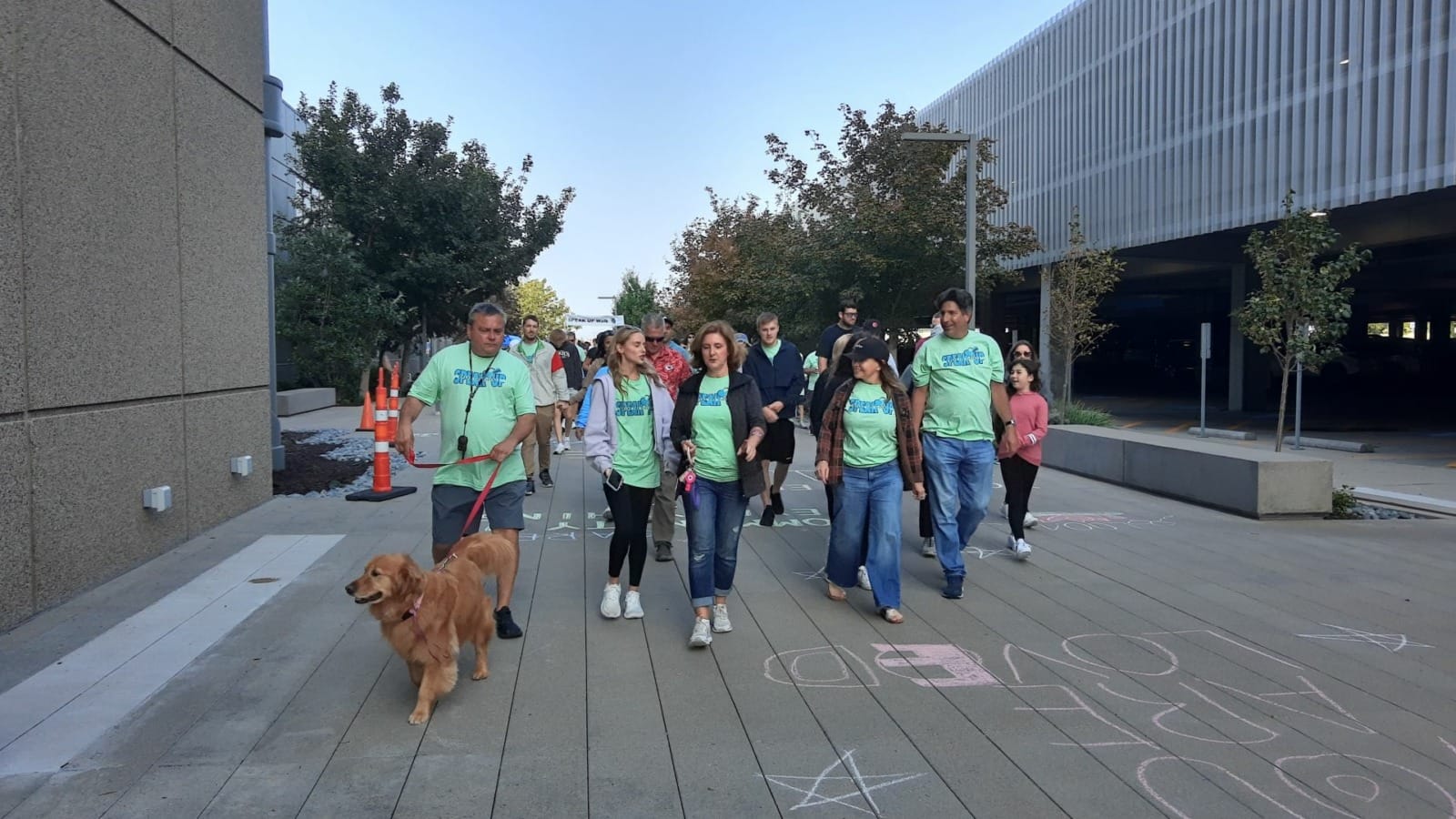
Steve Arkin announced the news at the eighth annual Speak Up Walk in September, the group’s primary fundraiser. He had believed it might take a decade or more to reach that “lofty” goal of zero suicides. It took less than five years.
“What’s most amazing is that it was zero in the face of COVID,” he said, when the financial burden and social isolation of the pandemic were predicted to cause a secondary pandemic in mental health.
It’s the support of parents whose children died by suicide that helped the district reach that goal of zero, said Dr. Tonya Merrigan, Blue Valley superintendent.
“We have been a beneficiary of some foundations that were started by parents who took their grief over losing their child and wanted to do something positive,” Merrigan said. “I tell those parents all the time that I believe they are saving lives and honoring their child by doing that.”
Merrigan made mental health a top priority when she became superintendent in 2020, just as her predecessor had.
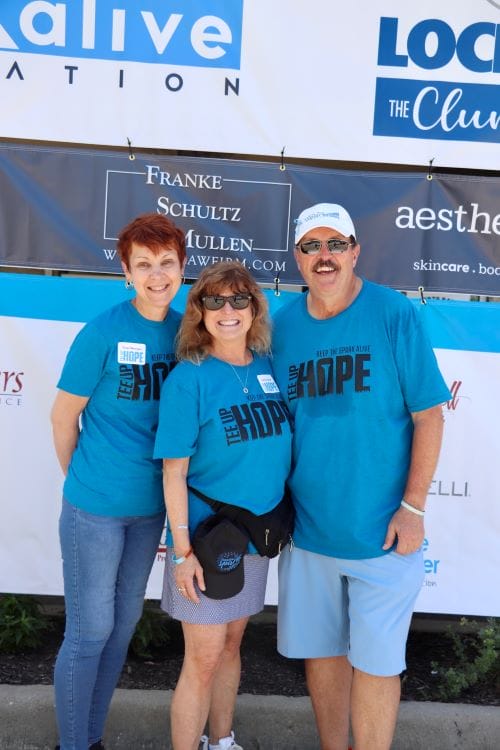
“The worst days of my career (in education) have been when I get a call that a student or staff member has died, and then there’s an added layer if they’ve taken their own life,” Merrigan said.
It’s impossible to single out one specific program or action as being responsible for the drastic change in numbers. “I can’t point to one thing and say…that’s why we had zero,” Merrigan said.
Three programs stand out, though, that are supported by family foundations: Sources of Strength, funded by Speak Up and Keep the Spark Alive, in every Blue Valley high school and middle school; Give Me 20, developed by Sylvia Harrell and BJ Thomas-Wilson; and Mental Health First Aid, with Keep the Spark Alive among its donors.
Merrigan also cites the fact that each Blue Valley school building now has at least one counselor and a social worker and access to a psychologist to create a mental health team. Nineteen of those social workers were first financed in 2017 by the Nick’s Voice Fund of Fore the Kids. That fund is in memory of Nick Timmons, a 2013 Blue Valley graduate who died by suicide in 2017.
Blue Valley Educational Foundation (BVEF) has recognized the contributions of Nick’s father Kevin Timmons and of Keep the Spark Alive and Speak Up with their inductions into the BVEF Hall of Fame, said BVEF executive director Susan Tideman.
The family foundations take part in each other’s fundraisers, from annual walks to golf tournaments. They support programs in the Blue Valley schools and other districts, particularly Olathe and Shawnee Mission, and in private schools. They also offer scholarships. Fore the Kids sponsors a professorship and other programs at Children’s Mercy that help Johnson County kids. Millions of dollars have been raised.
“They are such a resource for our district,” Tideman said. “They collaborate with each other to help reach our students.”
“Because of our tragedy, we band together and we don’t care who gets what, as long as we’re making progress in this fight to end teen suicide,” Harrell said.
Sources of Strength
Both Speak Up and Keep the Spark Alive searched for a suicide prevention program backed up by research. They found it in Sources of Strength.
Developed in 1998 by Mark LoMurray, a North Dakota social worker, Sources of Strength focuses on helping all students develop their strengths, rather than just seeking out students identified at risk. University of Rochester researchers confirm its effectiveness.
Jarrod Hindman, chief operating officer of Sources of Strength, based in Denver, called it “an upstream” approach before the onset of problems. “Rather than focus on crisis intervention, we really are trying to reach the entire school community with messages of hope, health and strength,” he said.
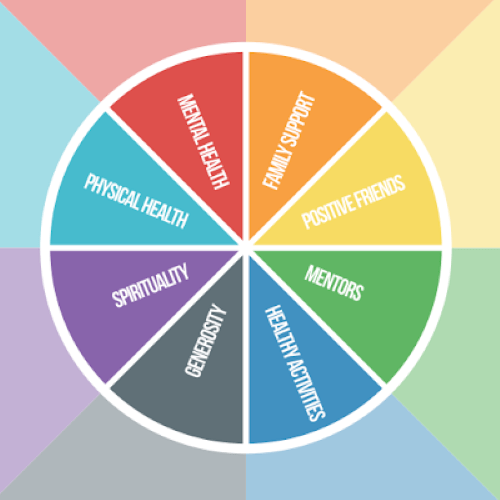
The program features the eight components of the Sources of Strength wheel: physical health, mental health, family support, positive friends, mentors, healthy activities, generosity and spirituality.
Because of her friendship with the Harrell family, Pleasant Ridge Middle School Principal Phoebe Lewis agreed to have her school do a pilot program of Sources of Strength for the district after Chad’s death.
“We had never really talked very frankly about mental health or suicide ideation back then,” said Lewis. After its success as a pilot, the program is now in all Blue Valley middle and high schools, funded by Keep the Spark Alive and Speak Up.
At Pleasant Ridge, the students have lessons on various aspects of the Sources of Strength wheel. Sometimes teachers create those lessons, and sometimes the students do. The October lesson was on healthy activities and positive friends – what they mean and what they look like – followed by an activity. In this case, it was a selfie board with friends during lunch.
“It’s a safe space to talk,” says Blue Valley West senior Lydia Ungaschick about the Sources of Strength program, which she’s been involved in since seventh grade. “It’s helping to break the stigma around mental health one by one.”
She’s one of 10 “execs” or executives, student leaders of the Sources of Strength program at West, who work with two teachers to plan the monthly meetings and activities. Both students and adults are trained by the national organization.
The student leaders are chosen from a cross-section of the population to better represent all cliques and factions.
They focus each month on one of the eight components of the Sources of Strength wheel. For November, they’re working on healthy activities. Students will write encouraging and uplifting messages like “you matter” and “we love having you here” on sticky notes that they’ll post on students’ cars, Lydia said. They’ll also meet to play kickball or take a walk.
“It’s one of the only clubs that’s truly about connection and not academics,” said Tamara Aumen, a gifted education teacher at Blue Valley West who is one of the adult sponsors. “The program’s message is connection through support systems and using your own strengths to support yourself and others.”
She said students also develop a network of peers and trusted adults to turn to when they’re facing a crisis.
Participation is not mandatory, but the messaging campaigns try to reach most students.
Give Me 20
Twenty minutes. That’s the amount of time some teens spend between deciding to take their life and carrying out the act.
Sylvia Harrell and BJ Thomas-Wilson learned that astonishing number in 2018 after they met at a suicide survivors support group.
Both realized their children – Chad Harrell and Regan Johnson – could be headstrong and impulsive.
Both wished their children would have stopped and remembered how much they were loved and how much they loved their lives.
That provided the inspiration for Give Me 20, a program that’s been presented to more than 12,000 kids in schools and youth groups in Johnson County and surrounding areas over the last four years.
“Why wouldn’t we use that 20 minutes to save your life?” Thomas-Wilson asked.
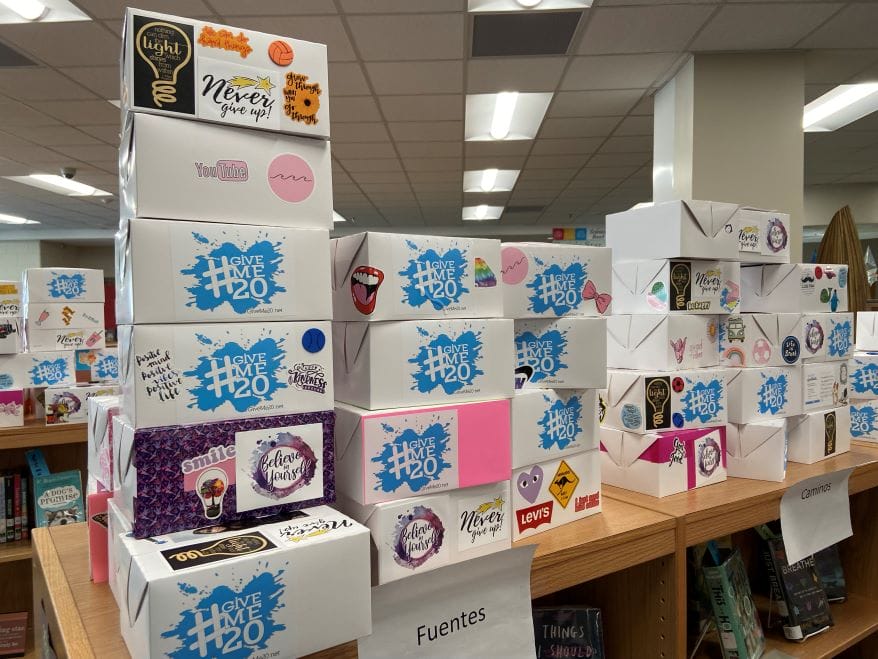
During the workshop, which lasts 60 to 90 minutes, students may watch a video, listen to the moms talk about Chad and Regan, and take part in various exercises like those that express gratitude or list people they’d call in a dark moment.
But the heart of the workshop is “the arts and crafts” part where the students create their LifeBox, a box that will hold items and reminders of why their lives are worth living.
“They put in happy memories,” said Thomas-Wilson, such as items that remind them of their dreams for a career or college. She said one girl brought her first pair of ballet slippers, while a boy brought a baseball from a game he attended with his grandfather.
Letters written by parents, friends and teachers are a key part that reminds them why they’re special.
Lewis said her daughter, now a high school sophomore, still has her LifeBox made in middle school, which contains a particularly special letter from her vocal music teacher.
Mental Health First Aid
“You learn CPR so if you run across someone having a cardiac issue, you know what to do,” said Dr. Kelly Wessel, director of human resources – recruitment and retention in the Blue Valley district. But how do you respond to someone in a mental health crisis?
That’s the point of teaching Mental Health First Aid, offered through the National Council on Wellbeing.
Blue Valley took it a step farther. Trainers around the state had to be called in last year to teach the first batch of coaches and key teachers (those like band directors and club sponsors who spend more time with students) so this summer, 17 Blue Valley personnel were certified to become trainers after an intensive three-day course.
They trained more coaches and teachers in September. Over the next three years, at a cost of nearly $100,000, about 900 coaches, teachers and club sponsors will be trained in Mental Health First Aid, gaining the knowledge and learning the vocabulary to deal with various scenarios regarding students’ mental health and well-being.
Those who take the course are not qualified to provide treatment but can “triage” students and refer them to appropriate help.
Picking up the cost of the program are J.E. Dunn Construction, Tom and Mindy Herzog, Resurrection – A United Methodist Church and Keep the Spark Alive.
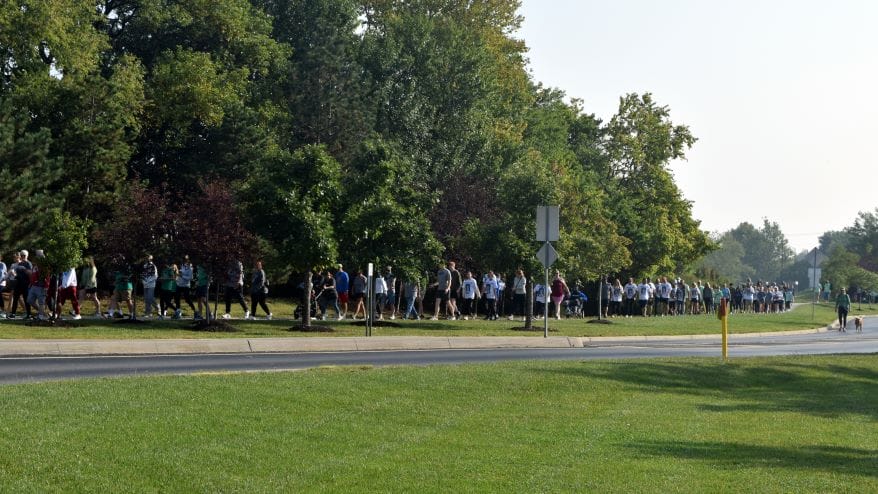
If anyone doubts how much mental wellness and suicide prevention programs are needed – or how young the kids might be that need them – Lewis said students in her middle school can type “suicidal” in their Chromebook if they are feeling desperate. (It’s a district-wide program.) That alerts Lewis and school counselors.
“I have had seven kids do that in three years,” she said. “One had written their will. But we got to them in time.”
Meanwhile, the parents who’ve lost their children to suicide continue to do what they can.
“We don’t want other parents to join our group,” Marrs said.
They also recognize the importance of the support from the community. In an emotional speech at this summer’s Keep the Spark Alive golf tournament, Lewis, who knew Chad Harrell when he was a sixth grader, told the crowd, “You are saving kids’ lives.”
“We’re in our third year of Blue Valley not losing a child to suicide,” Harrell said. “That’s a testament to how a community can make a sea change in an epidemic.”
If you or someone you know is thinking about suicide or needs help, call 988, the Suicide & Crisis Lifeline.
Diana Reese is an award-winning writer, journalist and editor with hundreds of articles published in magazines and newspapers. She has specialized in health and medical issues and now writes on everything from decorating to motherhood.


